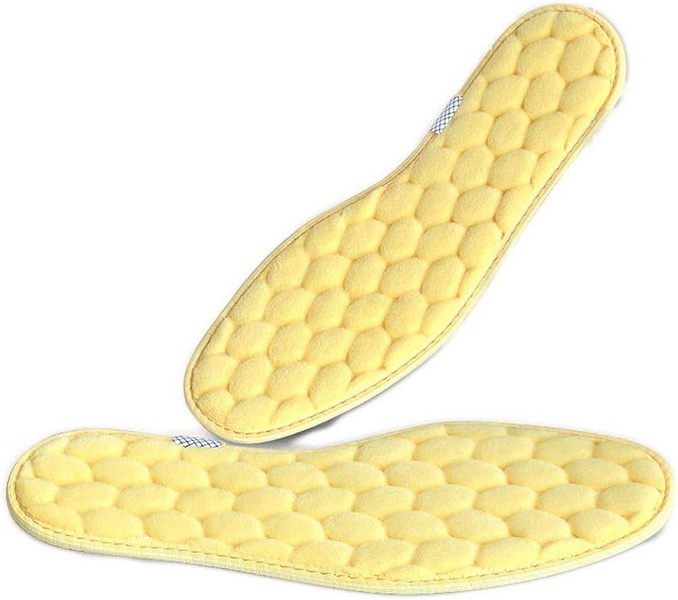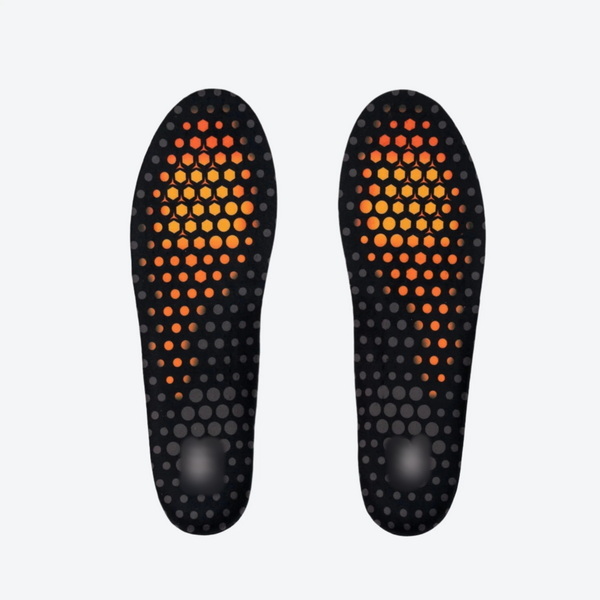Views: 222 Author: Edvo Publish Time: 2025-11-19 Origin: Site











Content Menu
● The Science Behind Heat Moldable Insoles
● Comparing Heat Molding to Wear Molding
● Essential Equipment and Preparation
● Step-By-Step Guide to Heat Molding Soletech Insoles
>> Step 1: Test and Trim for Fit
>> Step 4: Insert Into Shoes Immediately
>> Step 5: Fit Your Foot and Stand
● Understanding the Benefits of Heat Molded Soletech Insoles
● Using a Heat Gun: Alternative Molding Technique
● Care and Maintenance for Longevity
● Who Should Use Heat Moldable Insoles?
● When to Replace Your Molded Insoles
>> 1. How long does the heat molding process take from start to finish?
>> 2. Can Soletech insoles be reheated and remolded?
>> 3. What types of shoes work best with heat moldable insoles?
>> 4. Will heat molding work for all foot types, including high arches or flat feet?
>> 5. Are there special considerations for people with medical conditions?
Getting optimal comfort and personalized support from footwear often means enhancing the fit from the inside out. Soletech insoles are engineered to address a variety of foot needs by offering advanced cushioning and support — but their true advantage comes alive when you heat mold them to fit the unique shape of your feet. This exclusive guide is designed for athletes, professionals, and anyone who values long-lasting support and wants to experience the full potential of heat insoles.

Soletech insoles are crafted using specialized heat-reactive foams and performance materials. These materials are engineered to become pliable at specific temperatures, enabling them to contour around your foot structure and preserve that fit as they cool. This technology is widely used because:
- It ensures an exact fit for various foot shapes, whether high-arched, flat-footed or neutral.
- The custom-molded shape leads to better weight distribution and pressure relief.
- Proper alignment can reduce fatigue and prevent common injuries associated with poor support.
Personalized footbeds are recognized by podiatrists as an effective way to address frequent issues like plantar fasciitis, heel pain, and arch collapse.
There are two main ways to customize Soletech insoles: natural wear molding and oven-based heat molding. Wear molding lets the insole gradually conform to your foot through daily use. While effective, this process can take several days to weeks, depending on activity level and body weight. Heat molding, by contrast, delivers instant results with a truly individualized shape in just a few minutes.
Recommended for those with low arches, sensitive feet, or anyone who finds the initial arch support too firm, heat molding speeds up the break-in process and ensures total comfort from day one.
Before getting started, make sure you have the following:
- A pair of Soletech heat-moldable insoles that match your shoe size.
- The shoes you intend to use (preferably ones with removable insoles).
- Socks you wear regularly.
- A conventional oven (not a microwave).
- A baking tray or tray covered with foil.
- A timer to ensure precise heating.
- Household scissors for trimming, if required.
Preparation steps include washing your hands, ensuring the oven is clean and free of food debris, and removing any old insoles from your shoes.
Place the Soletech insoles into your shoes to check sizing. If needed, use the original insole as a template to trace and trim your Soletech insoles for a perfect fit along the toe and lateral edges. Accurate trimming ensures no bunching or discomfort later.
Set your oven to 200°F (approximately 90°C). Allow it to preheat and use an oven thermometer if possible, as excessive temperatures can damage the insoles' structural integrity. Do not use a microwave; its rapid, uneven heating can ruin the product.
Place your trimmed Soletech insoles face-up (fabric side up) on a baking tray. Insert them into the preheated oven's center rack.
- Standard heating time is two minutes.
- If you have a color-change indicator, wait for the tab to respond accordingly.
- Avoid overheating, which can cause warping or reduce foam resilience.
Remove the insoles carefully with oven mitts; they will be warm but not scalding hot.
Quickly but carefully, place the molded insoles into your shoes, ensuring they sit flat and do not shift. Proper placement is crucial for an even fit.
While still warm, put on your shoes wearing your normal socks. Push your heel firmly to the back of each shoe and fasten tightly.
- Stand upright with feet shoulder-width apart.
- Hold this stance for two minutes, maintaining even pressure as the foam cools and sets.
During this period, the foam structure takes a precise impression of your foot's arch, ball, heel, and instep.
After two minutes, sit down and carefully remove your shoes. Allow them to cool naturally for at least 10 minutes. Avoid placing them in a cold environment or using fans, as rapid cooling might affect the final shape.
Properly heat-molded insoles offer the following benefits:
- Enhanced support for natural gait and foot alignment.
- Minimized risk of calluses, blisters, and hot spots due to reduced friction.
- Improved energy return and stamina, especially in sports and high-impact activities.
- Reduction in foot and lower back pain for individuals who stand or walk throughout the day.
These insoles are especially beneficial for people with diabetes, flat feet, arthritis, or unique pressure points.

For individuals without access to an oven, a heat gun can offer an alternative:
- Set the heat gun to a low heat setting (maximum 160°F / 71°C).
- Hold the gun 4–6 inches above the insole and move in smooth, circular motions for about two minutes.
- Continuously feel the insole's temperature—it should be pliable but not too hot.
- Place into shoe and follow the same fitting and cooling process as oven molding.
This technique is particularly helpful in clinical or workshop settings, or when only spot adjustments are needed.
To maximize the lifespan and maintain the effectiveness of Soletech insoles:
- Remove insoles weekly for air drying, especially after heavy use or moisture exposure.
- Clean with mild soap and cool water by hand; avoid submerging in water or machine washing.
- Avoid prolonged exposure to direct sunlight or high heat, which can degrade materials.
- Store unused insoles in a dry, cool environment.
- Uneven Fit: Reheat and repeat the standing procedure, ensuring even weight distribution.
- Stiff Feel After Molding: Allow more time for natural break-in after heat molding; the foam will continue to adapt subtly.
- Persistent Odor: Let insoles air out for several hours. Odor usually dissipates on its own.
- Lack of Arch Support After Use: Mold can safely be repeated up to two additional times for a deeper fit or to correct support.
Soletech's advanced insoles are suitable for:
- Athletes seeking high-impact cushioning and support.
- Workers in construction, healthcare, retail, or hospitality who spend long hours standing or walking.
- Seniors and adults managing diabetes, neuropathy, or chronic foot pain.
- Hikers and outdoor enthusiasts needing tailored support for rugged terrain.
- Individuals with prosthetic limb support or orthopedic footwear.
Consult a footcare professional for custom recommendations if you have advanced orthopedic concerns.
With daily use, even premium heat-moldable insoles will eventually lose their structural integrity. Consider replacing your Soletech insoles:
- Every 6–12 months for heavy users or athletes.
- Immediately if you notice cracking, tears, or flattened cushioning.
- If you experience renewed discomfort or a change in support.
Heat molding Soletech insoles is an easy, effective method to achieve custom-fit comfort and advanced support. With a few household tools and less than 20 minutes, you can enhance shoe fit, reduce pain, and support foot health for all activities and lifestyles. Remember, proper molding and regular care are key to enjoying the full benefits. Anyone prioritizing their health, mobility, or performance will find immense value in custom-molded insoles.

The whole process can be completed in about 15 minutes, including preparation, heating, fitting, and cooling. Only two minutes of heating and two minutes of standing in your shoes are required for actual molding.
Yes, they can be safely reheated up to two more times. This feature allows users to re-customize the fit as needed, for example, when switching to new shoes.
Shoes with removable insoles and enough internal volume, like running shoes, work boots, or hiking footwear, are ideal. Avoid shoes that are very tight or narrow as they may not accommodate both foot and custom insole comfortably.
Yes, Soletech's heat-reactive foams are designed to adapt to various foot shapes, offering targeted support to both flat feet and high arches. For unique anatomical needs, consult a podiatrist.
People with diabetes, neuropathy, or circulatory problems should mold insoles with lower heat settings and may benefit from professional fitting to avoid excess pressure or injury.